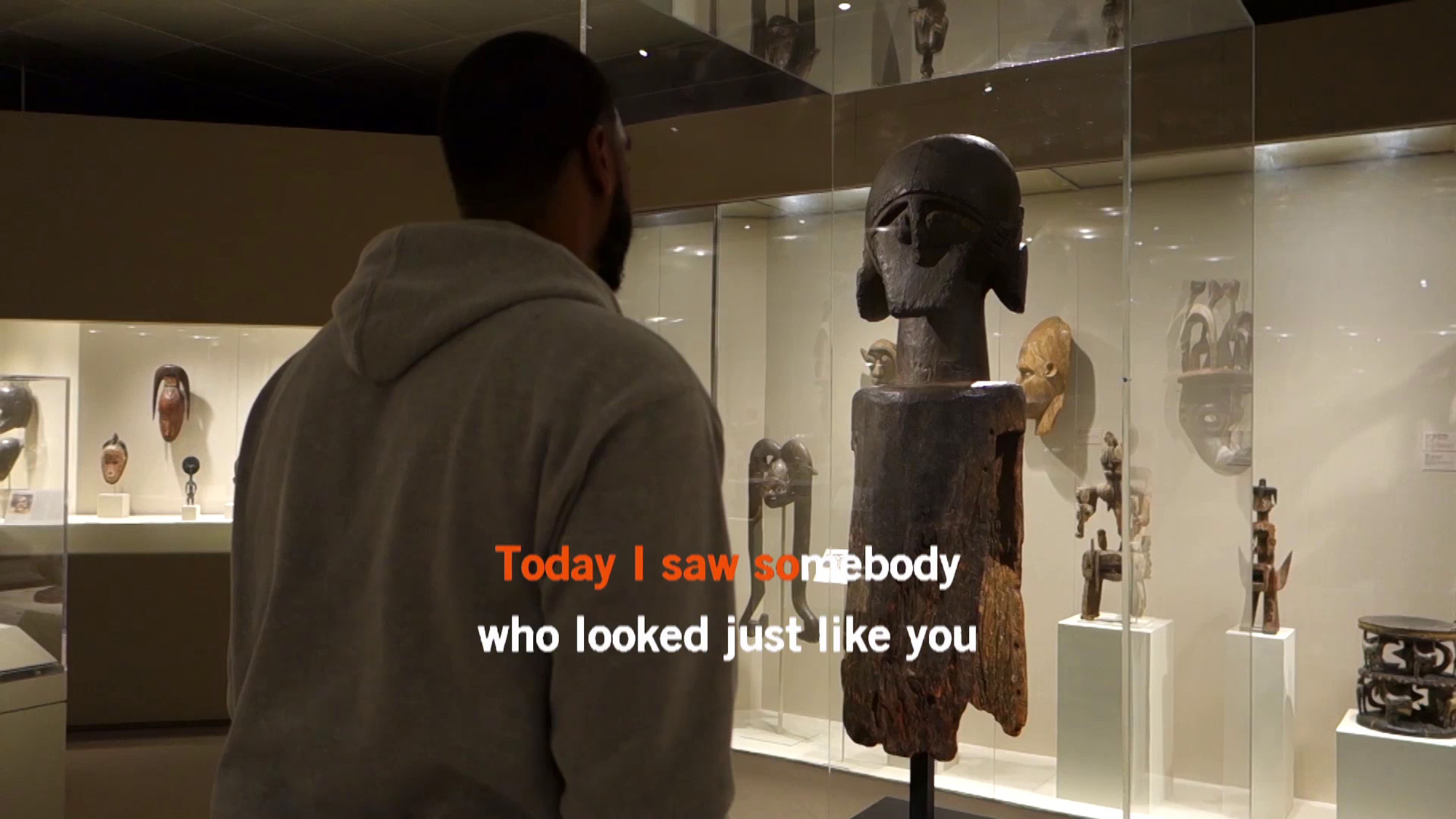A few years ago, I went to the Louvre with a friend who was visiting from New York. They are a painter and wanted to drink in European paintings, so we took the train up from Marseille to Paris for the afternoon. I have a long history with the Louvre, beginning with the fact that it is the first museum I remember going to as a child. I grasped my grandmother’s hands and took in her old-fashioned perfume, watching my brother run in uncontrollable circles around us flapping his hands, yelling about the chemical process for mummification. I subsequently studied art history for fifteen years, the canonical version of which is firmly grounded in collections like the Louvre’s. I have taken students there myself to teach classes about cultural appropriation in those long halls.
None of this history prepared me for an afternoon with an American painter (on whom I was developing a deep crush) standing thoughtfully in front of those many paintings of bodies. Two queers talking about the texture of flesh wounds that were—suddenly, to me—erotic beyond any doubt, marveling at the play of gazes between young men. The sexual tension between me and the painter matched the obliquely expressed queerness in so many of the works on view. I had never before considered the duality of the canon I had learned so dutifully in a fully embodied sense.
We ate some cake at a café on the second floor and then went out into the weak sunlight of a Parisian afternoon in November. We resolved neither our mutual desire for the canon nor whatever was unspoken between us, yet it is one of my most vivid queer experience of an art collection. When CAS editor Heather Jones asked me to reflect on the topic of collections from a queer perspective, that afternoon is what comes to mind—walking through a space saturated with imperialism and colonial violence, in an institution that is entangled with Catholicism at both symbolic and historical levels, surrounded by paintings and sculptures that testify to all kinds of desires avowed and disavowed.
What do I want from art collections, really, as a queer person or on behalf of those who identify as straight and yet still suffer from heteronormativity? The current moment in art is, in my view, pervaded by a flat sexual imagination, and buying art by queer people isn’t going to compensate for it. I speak for myself here, but what I want is space for desire that isn’t iron bound to consumption. I want the lesbian bars run by grumpy old queers who live around the corner to stop disappearing. I want to live in socio-sexual margin that isn’t in the process of being collected for its representation of queerness, but which is still actually being used to identify and act on polyvalent desire.
I also want a queer perspective on collections, or, a perspective that queers space that is otherwise aligned with dominant forms of power. In Complaint! (2021), queer feminist scholar and writer Sara Ahmed describes the queer use of institutional spaces through an example of a family of birds that has made a nest in a post box. The box hasn’t been moved or become something different from what it was, it’s just that its use has been queered. If the inhabitants of that address want to receive their mail, they would have to set up a new post box or make a family of hatchlings homeless.
When queer use is successful, like the reused postbox, it is through a world-dismantling effort where the previous world order is necessarily rendered inoperative. For queers, making a nest could mean, for example, having space and time for public sex, access to medical care for transition and hormones, safe and appropriately ambiguous bathrooms, or the space to bind together in kinship without conforming to normative family law, among other things. To use a public space for cruising transforms that space, even if the transformation is limited to certain times of the day. To live in a body and use pronouns outside the binary destabilizes the binary for everyone, even gender-conforming people. Ahmed’s definition of queerness is pragmatic. The birds in question are finding shelter, they are not window-dressing the letterbox with their desire for an ephemeral institutional moment.
The implications of Ahmed’s example are significant. The would-be letter-poster must go build another postbox, as this one cannot shelter letters. Similarly, one cannot simply hang a disco ball in the basement of a museum and scatter glitter about so carefully that it doesn’t contaminate the seventeenth-century oil paintings across the hallway. My afternoon in the Louvre wasn’t an instance of queer use, not in Ahmed’s sense. The painter and I enjoyed the fact that queers have been making art for a long, long time. We enjoyed the tension of that which is illicit in the work and that which felt illicit between us. Yet we took no world apart and made no address inoperative. Queer use dismantles the world—even if that world only exists at the scale of a letterbox or a single museum collection. To think about queer use means accepting the possibility of a functional transformation of space. Collecting can be part of that effort, of course, but it is difficult to imagine how a collection of contemporary art could become something else, something like a nest chaotically put together with feathers and bits of scavenged cardboard, for example. I think we need to give up the dream that we can have that nest and get our letters delivered in good time at their proper place.
There is another way to address this desire for a queer perspective, which honors Ahmed’s radical pragmatism and resists the capitalist construction of queerness. I will try to sketch this possibility through two artworks from two very different contexts: US-based artist Sondra Perry’s video installation It’s in the Game (2017) and Norway-based artist Liv Bugge’s video The Other Wild (2018). Both offer a queer perspective on a collection of objects, and both are addressed to the structuring logic of the spaces they represent. Perry’s work engenders a transformative recognition through its representation of that which haunts collections. Bugge’s work represents a collection in the process of transforming, though ultimately its doesn’t fully transform and that failure is also revelatory. Both works operate in the spirit of Ahmed’s nesting example, space-making or space-taking in ways that suggest what needs to be done to collections, even if they don’t enact this change. Neither work is about queerness, but the projects share a commitment to the ghost—that which haunts the exhibition space but is occluded from it—much like queerness haunts society but remains liminal.
—
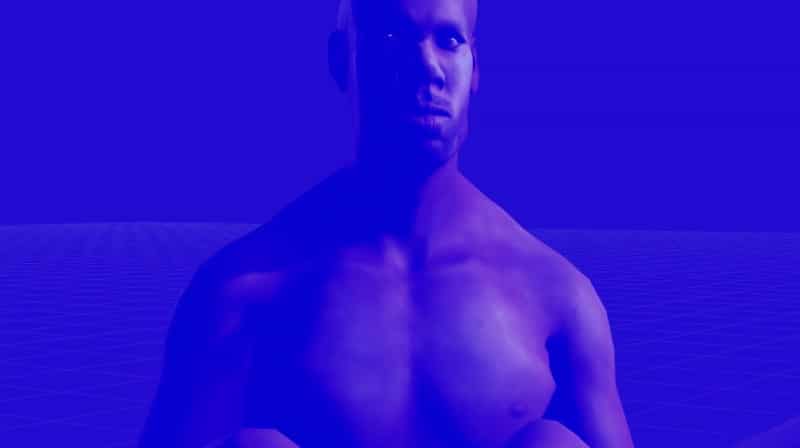
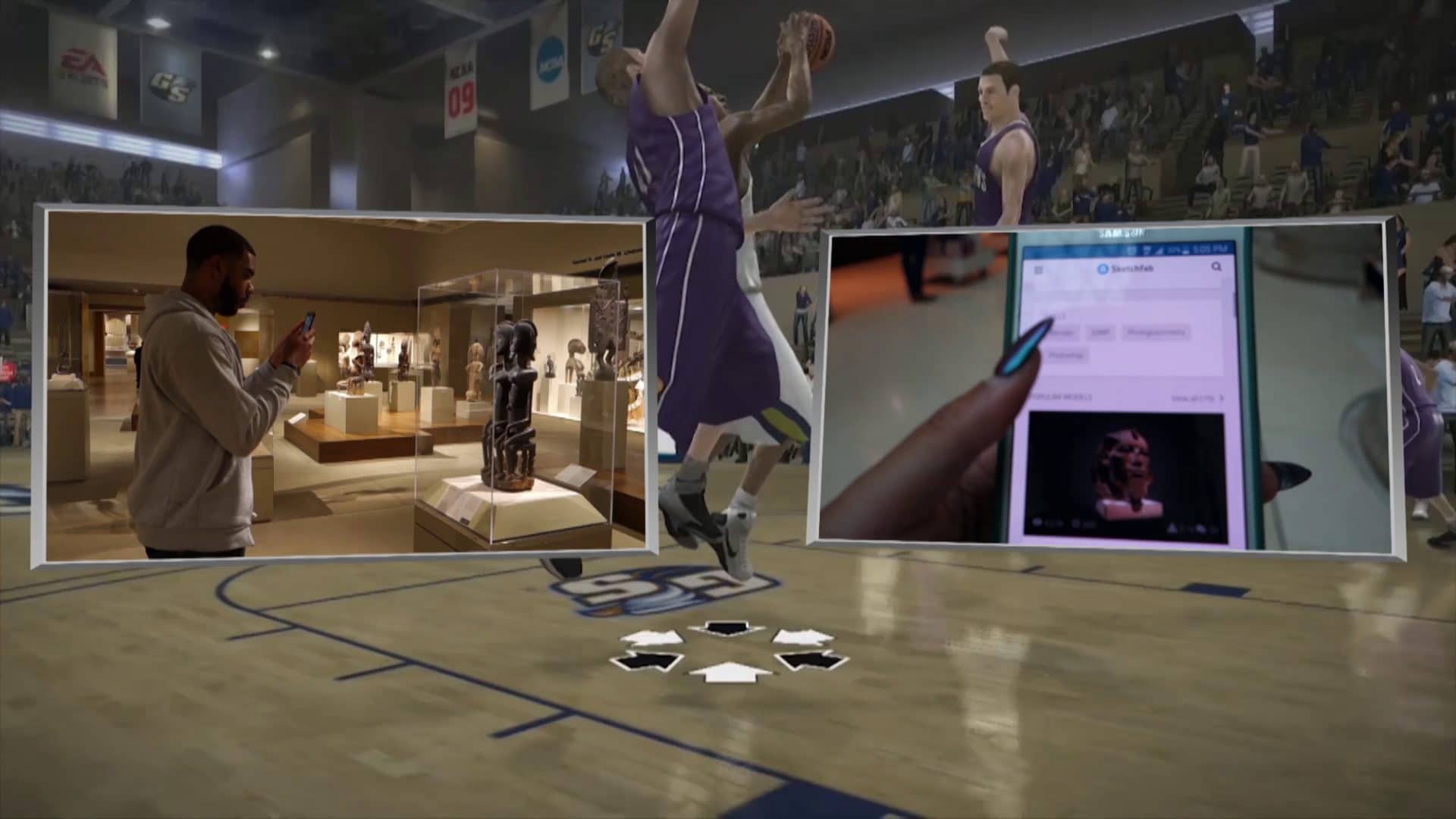
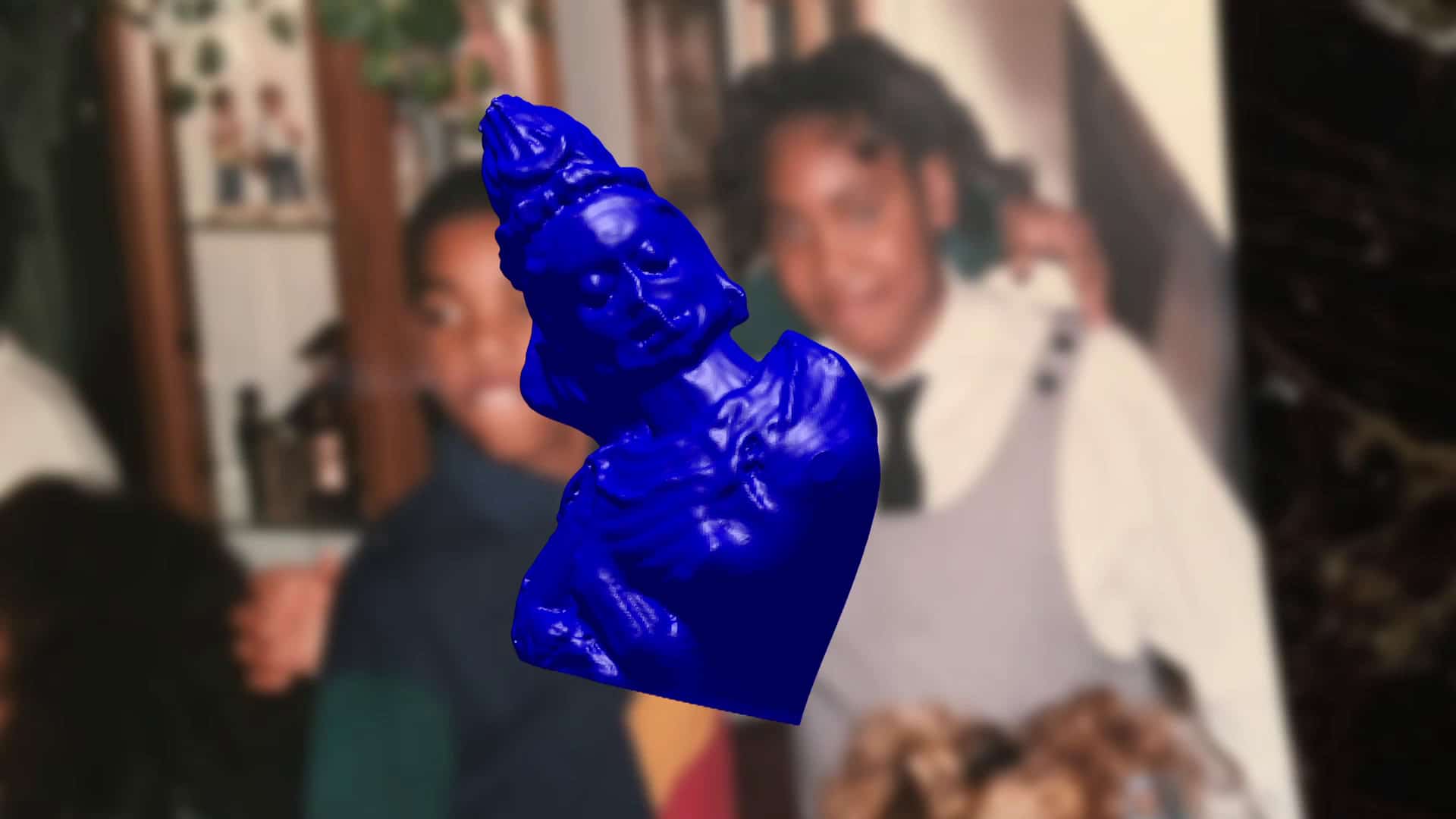
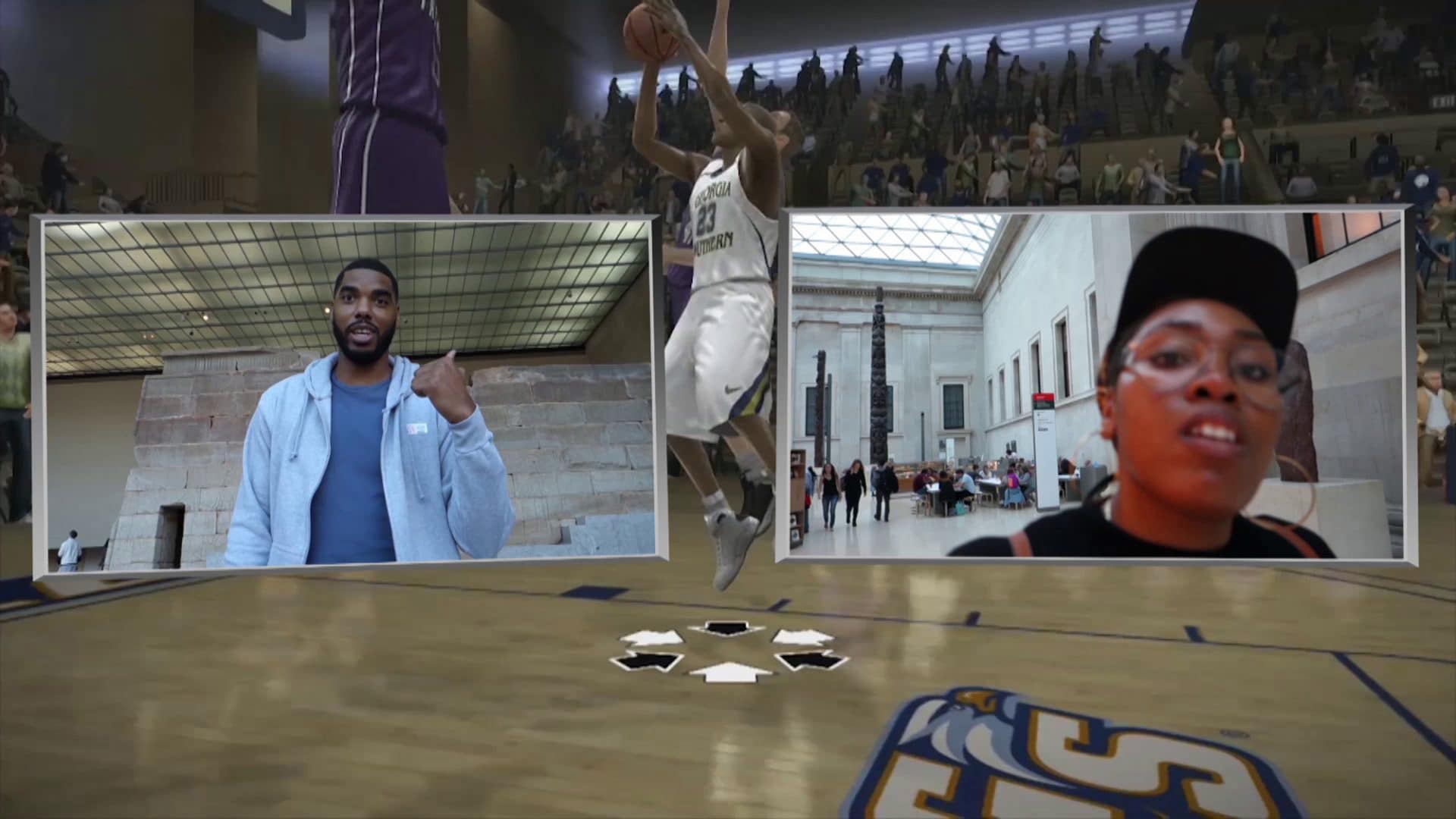
There is a moment in Sondra Perry’s video It’s in the Game (2017) in which the artist films her twin brother Sandy Perry reacting to the Temple of Dendur in the Metropolitan Museum of Art. The work is a video installation about the right to one’s image, considered against a history of imagery and distribution. Sandy is incredulous at the fact that UNESCO moved a temple built around 10 BCE in Egypt to New York City stone by stone and reconstructed it inside a museum. Sondra replies, “I know. It’s wild.” She is off camera, but her tone is wide and deep enough to fill the space of the video. It is as though she said, “White people think this is admissible—can you imagine?”
The footage from the Met is shot on a phone. It is shaky and improvised as it zooms in on things in glass cases. A computerized voice recites truncated provenance stories on a voice over. These often end with “gift of…” with a European sounding name highlighting the fact that many were looted from the Americas and the African continent. In an interview with curator Connie Butler from 2020, Perry relates an anecdote about her tacit collaboration with sympathetic security guards who enabled the pair to film when it would otherwise be forbidden to do so. 1 Both in content and form, It’s in the Game is an illicit record of things stolen.
- https://www.youtube.com/watch?v=jsjm18XtU4g
Someone who wants to defend the Met could recount this admissible provenance story: the Temple of Dendur was erected by Roman colonizers and not indigenous Nubians, so its relationship to the original site was tenuous. In 1965, it was gifted to the Unites States by Egypt’s president at the time, Gamal Abdel Nasser, in part because he was in the process of building the Aswan High Dam (1960–70). Upon its completion, the dam flooded the site in Lower Nubia where the temple had stood for almost two millennia. In fact, one could argue that the United States saved the temple from certain destruction, positioned as it was in the wake of Egyptian modernity.
This story of triumphant salvation by the United States in response to Nasser’s magnanimous transnationalism is, however, only one part of the Temple of Dendur’s fabled history. The conviction in Perry’s tone—“It’s wild”—provokes me. I have the sense that she perceives something about the structure that is excluded from the institutional narrative, something implicit but constitutive. In an article written at the time of the temple’s installation at the Met, in 1978, Robert S. Bianchi clarifies the motivation for the construction of the temple around 15 BCE:
"Consistent with his policy of securing the frontiers of the entire empire, Augustus dispatched the Roman General Petronius on a series of punitive campaigns into Nubia, the region south of Assuan, in order to create a buffer zone. Having secured this area, the Romans in the name of Augustus erected numerous temples there linking their emperor to the existing local cults, including the worship of Isis, who had become the major Egyptian goddess and her consort Osiris, the god of the Hereafter." 2
- Robert S. Bianchi, “AUGUSTUS IN EGYPT: The Temple of Dendur is Rebuilt at the Metropolitan Museum of Art,” Archaeology, Vol. 31, No. 5 (September/October 1978): 5.
Bianchi goes on to explain that after Augustus killed a great many Nubians, he had Nubians architects design and build several temples in the buffer zone in close consultation with the Romans. Their purpose was to link the worship of Isis to Augustus and to blur the boundary between Nubian divine imagery and the military imagery of the conquering Roman Empire.
I watch the scene from It’s in the Game several times, lingering on the twins’ body language, the way they look at things as they move through the Met’s collection. It is as though the Perry twins have paranormal sight, can see a history of overlapping conquests where others might only see an Egyptian temple. They are sensitive to the space of the collection’s latency. They seem to sense that it contains all the ways in which objects have been used before by others.
Objects are never just objects, they are embedded in a socio-political field that extends sometimes thousands of years after they have been created and continues to produce effects—such as triumphant provenance fables—and continues to occlude people, stories, functions, and so on. Sociologist Avery Gordon defines haunting as, "[A] paradigmatic way in which life is more complicated than those of us who study it have usually granted. Haunting is the constituent element of modern social life. It is neither pre-modern superstition nor individual psychosis; it is a generalizable social phenomenon of great import. To study social life one must confront the ghostly aspects of it. This confrontation requires (or produces) a fundamental change in the way we know and make knowledge, in our mode of production." 3
- Avery Gordon, Ghostly Matters: Haunting and the Sociological Imagination (Minneapolis: University of Minnesota Press, 1997), 7.
For Gordon, ghosts constitute modern social life; that is, this life does not exist without them. Reading with Gordon, it is also clear that the Perry twins do not react to the ghosts that haunt the collections of major museums out of subjective sensitivity. Rather, perhaps because they do not identify as white, they are less invested in the structure and production of knowledge embodied by such institutions, and therefore are prepared for a fundamental change—so they see the ghosts. The strength of It’s in the Game lies in the way it draws a connection between the haunting of museum collections and that of other kinds of collections as well. Perry’s 16-minute video opens with images from a collection of family snapshots of the twins as children. A blur filter has been applied to each photograph, which softens the contours of spaces and bodies, leaving them recognizable but only tenuously present.
Digital renderings of objects from the African art collection of both the Metropolitan Museum of Art and the British Museum are digitally superimposed on the snapshots. These digital objects revolve slowly on the screen, keeping rhythm with a ritardando version of “You Are Everything” by the Stylistics. 4
- https://www.youtube.com/watch?v=6StORhP7n2c
In the interview with Butler, Perry explains that these digital objects are bootleg copies of the originals. She describes finding 3D files of the looted objects on web platforms such as Thingiverse and Sketchfab. When they were reproduced as 3D files, these objects were typically recategorized under Creative Commons licenses. This transformation grants users diverse permission to re-contextualize them as they see fit or print them on 3D printers and use them in physical space as they like. Perry compares the legitimization of image-theft in the arena of image licensing and the legitimization of object-theft perpetrated by European colonizers.
Perry also links both processes of re-contextualization as theft with the likeness lawsuit brought against the Nation College Athletes Association (NCAA), a class-action lawsuit for using the likeness of student athletes to produce avatars for NCAA’s extremely profitable sports video games. Sandy Perry was a student athlete and his name, performance statistics, and athletic mannerisms had been used for just such an avatar. For three-and-a-half painful minutes in It’s in The Game, Sondra cajoles Sandy into navigating the avatar menu on one such video game. She asks him to describe the real people behind the statistics and forms that flash onscreen like objects in a digital collection. This one is crafty, hard-working; this one was athletic, one of best players in the conference; an unnamed player is recognizable to Sandy from his statistics as Kenneth Ward, his college roommate for most of his time at Georgia Southern University.
“The ghost or the apparition,” Gordon explains, “is one form by which something lost, or barely visible, or seemingly not there to our supposedly well-trained eyes, makes itself known or apparent to us, in its own way, of course.” 5 Kenneth Ward and Sandy Perry have been lost in the translation from the court to the screen. They are “seemingly not there” as real people with off-the-court lives. Despite this occlusion, Sondra insists that her twin make their existence as constitutive elements of the world real, just one more time, no matter how frustrated he is at her pestering. Sondra draws us, the viewers, into that haunted reality in a manner that echoes Gordon’s description of ghostly matters more broadly:
- Gordon, Ghostly Matters, 8.
"The way of the ghost is haunting, and haunting is a very particular way of knowing what has happened or is happening. Being haunted draws us affectively, sometimes against our will and always a bit magically, into the structure of feeling of a reality we come to experience, not as cold knowledge, but as a transformative recognition." 6
- Ibid.
The viewer is asked to recognize the person on which each lucrative digital simulation in the game depends. As a result of this recognition, the relationship between the viewer and the collection of avatars is transformed. It’s in the Game is a collage of collections: collections of avatars, of digital objects, of personal photographs, and of physical objects stacked on top of each other throughout the video in such a way that the very notion of a collection begins to come undone. By asking the viewer to confront the spectral dimension of these various collection spaces, the viewer is offered the opportunity to experience spectral reality as a transformative recognition in Gordon’s sense of the term.
—
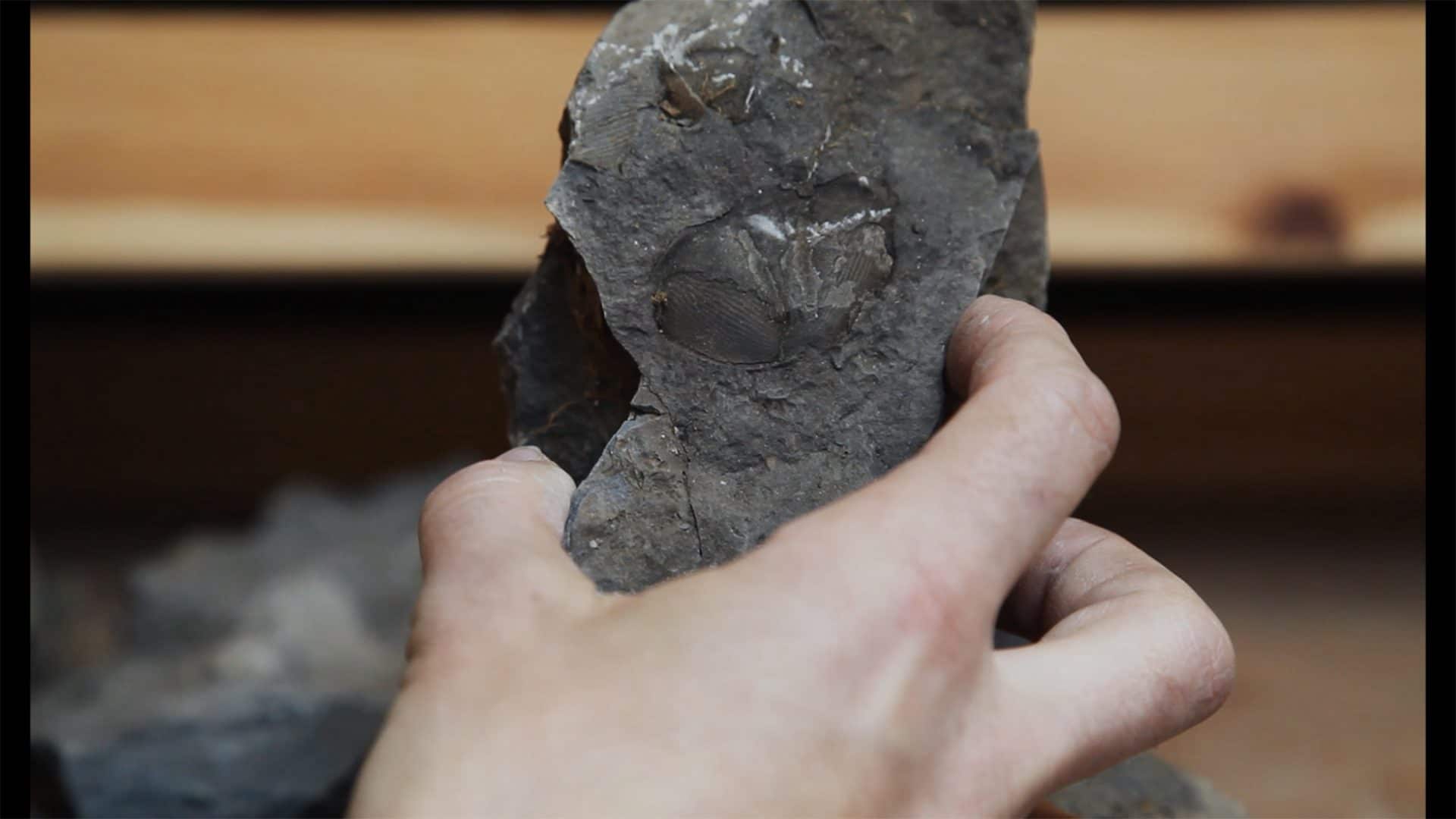
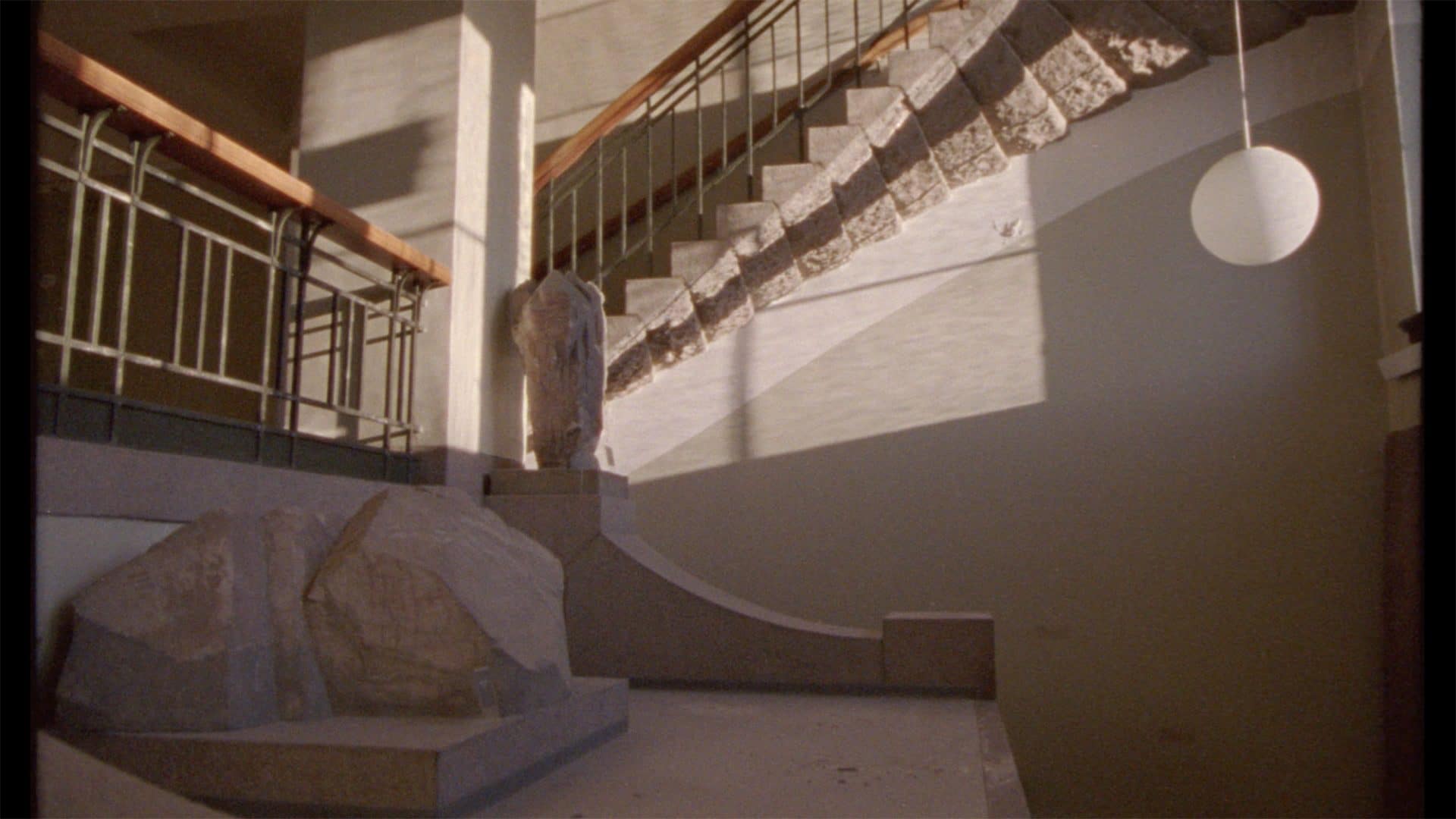
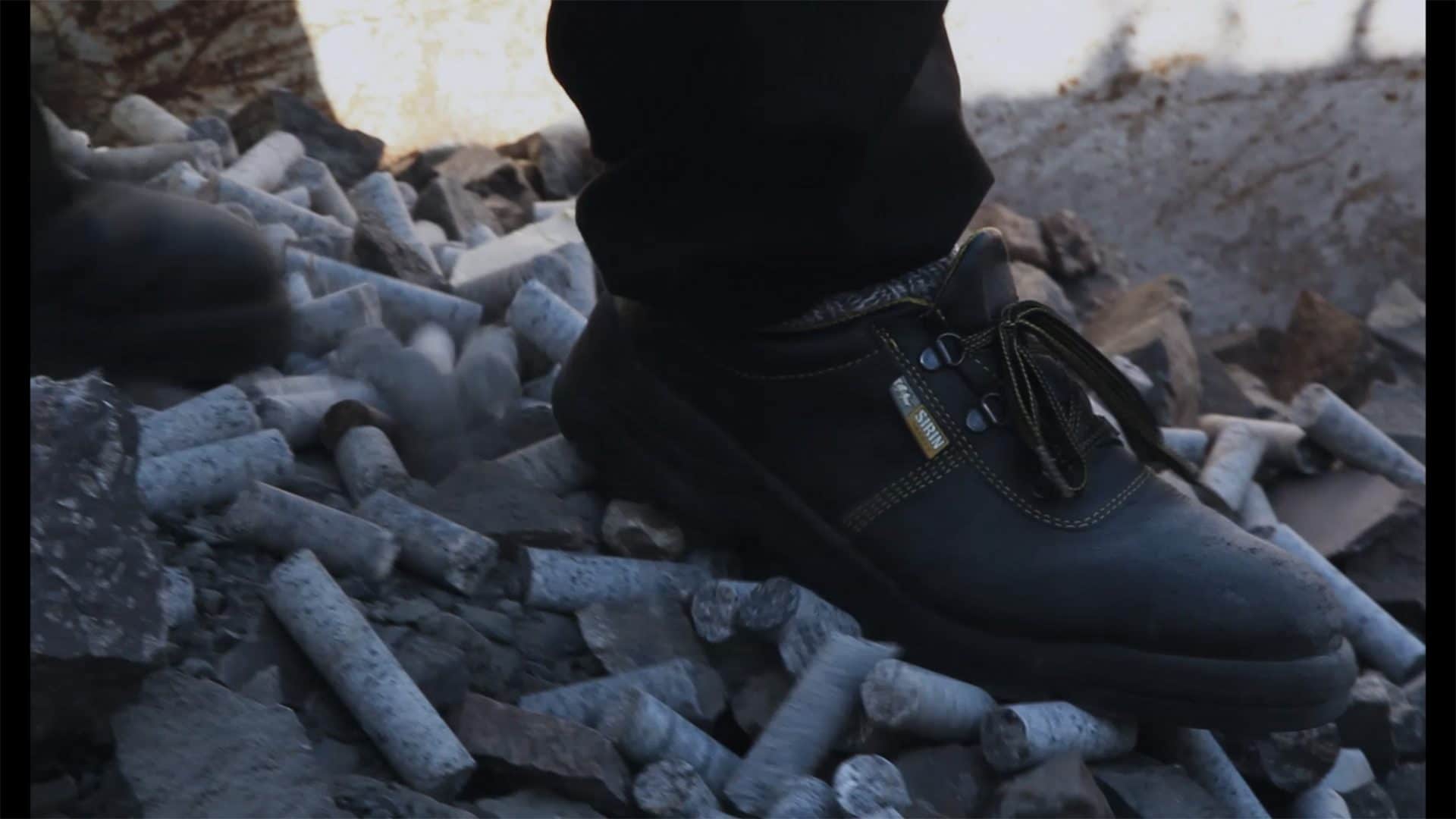
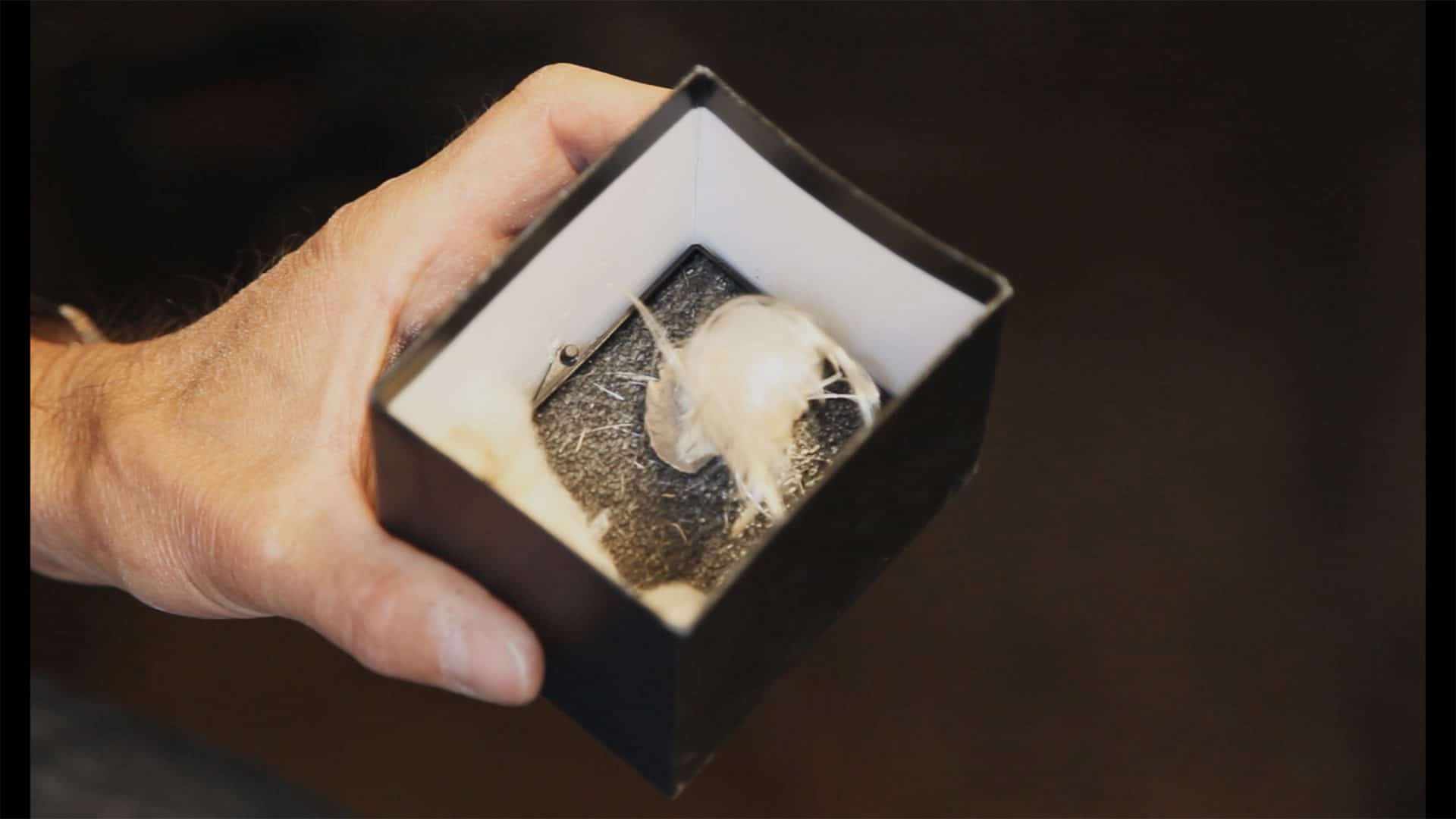
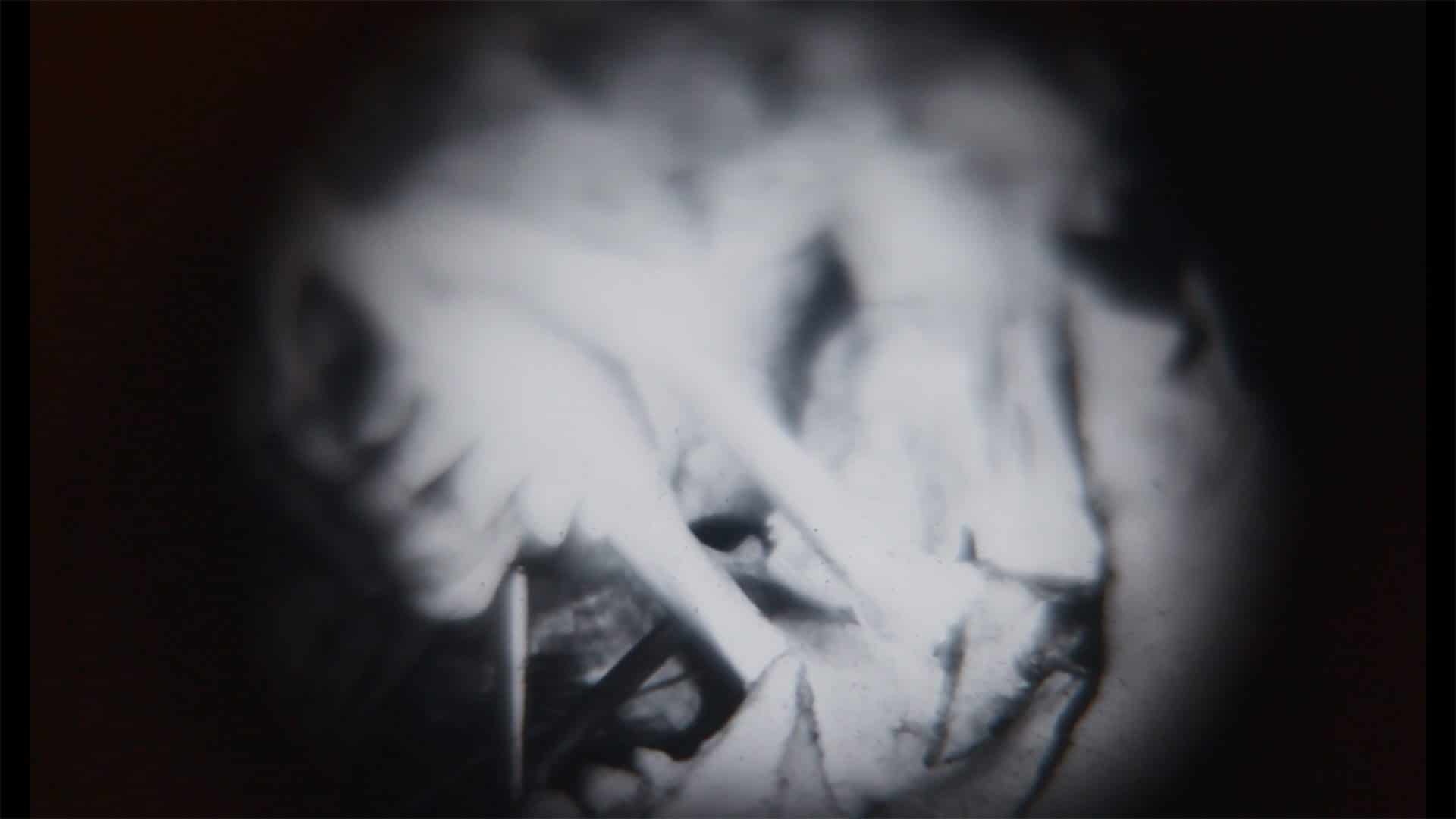
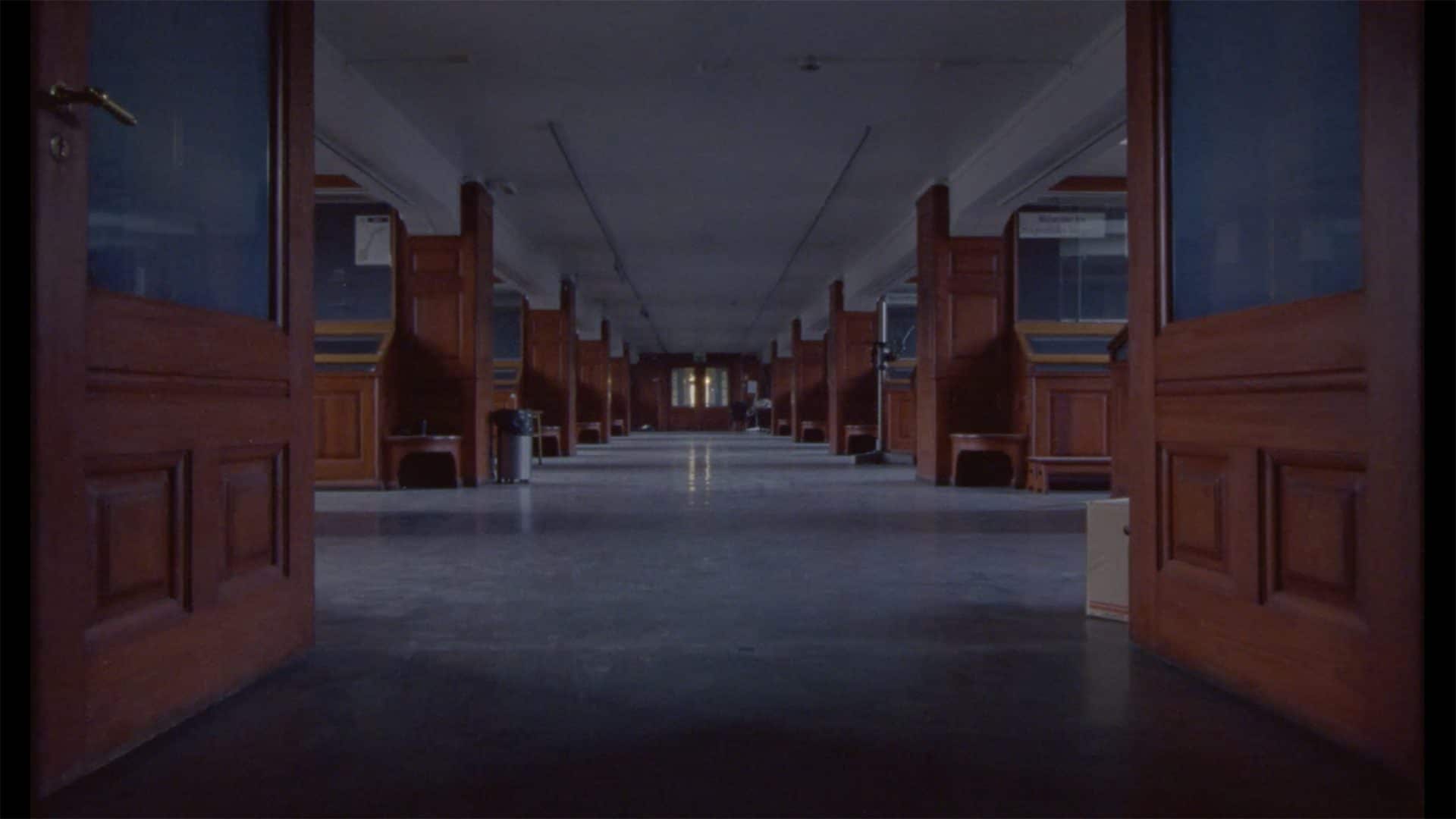
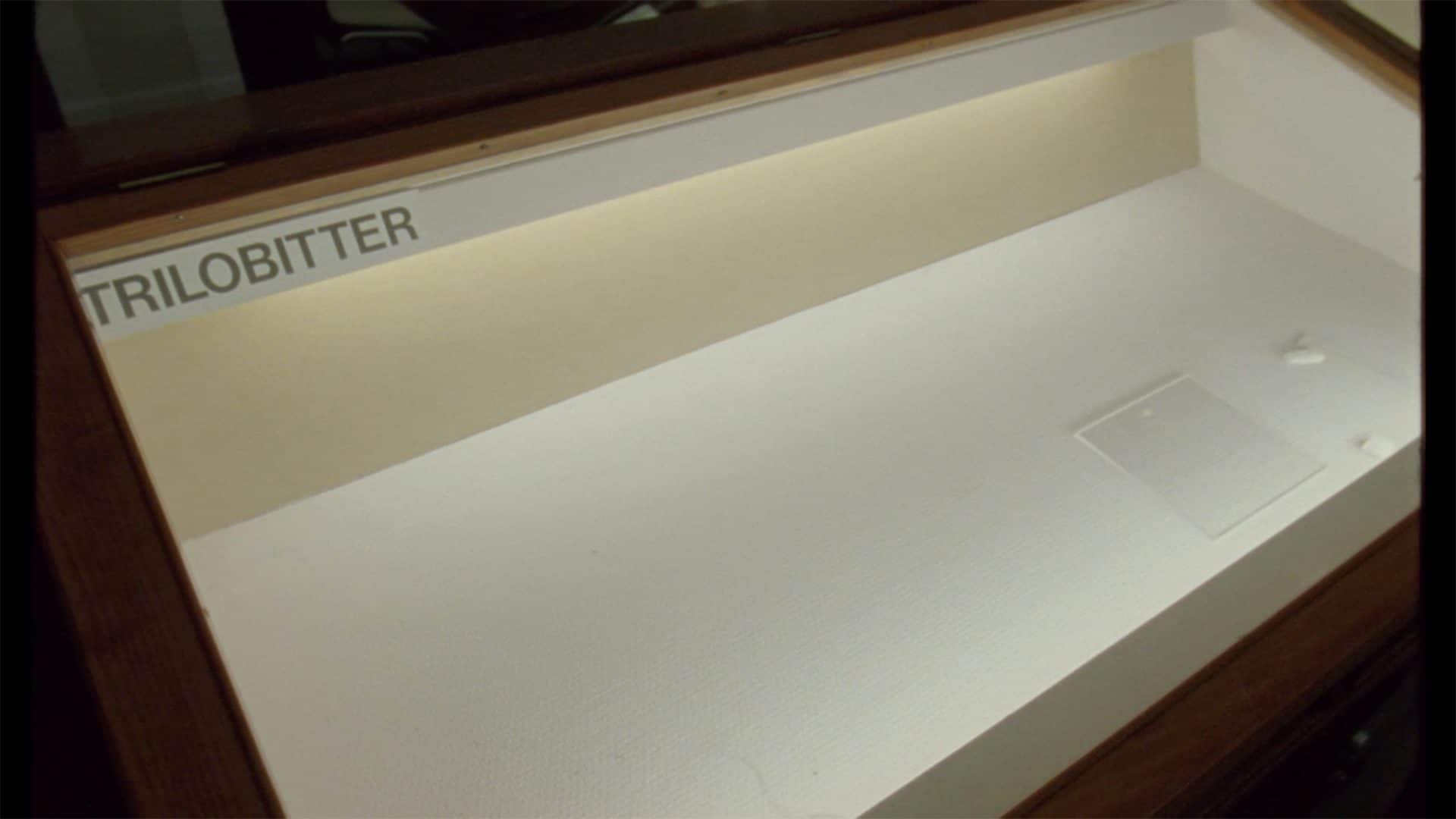

The Other Wild (2018) is a 30-minute video by artist Liv Bugge about the process by which the collections of the Natural History Museum at the University of Oslo were removed from Brøggers hus (the House of Brøggers) in Tøyen, Oslo, over the course of three years between 2015 and 2018. The collection was moved to a new location at the University of Oslo and re-installed, a process during which it was re-organized and many mineral samples were discarded. The original collection, which is the subject of Bugge’s film, included stones from all over the world, fossils, rock core samplings, and boxes of rocks and sand of all kinds.
Prior to its relocation, the Geological and Paleontological Museum had been housed in Brøggers hus since 1917. The space was full of hand-crafted wooden and glass vitrines designed to display the more valuable mineral and rock samples. Matching wooden beams and wainscotting were fabricated to create a space imbued with the feeling of a stately nineteenth-century library for rocks—an erudite and contemplative space in which to study the dust of the world.
Bugge’s video was shot at a time when the process of removing the collections was almost complete; it is a video of an empty nest. There is one shot of the museum’s most valuable item in monetary terms, the fossil of a small female primate named Ida who died 47 million years ago. Her remains were found in Germany in 1983 by an unknown private collector. That individual kept one part of Ida’s remains and sold the other part to the Wyoming Dinosaur Center in Thermopolis in the United States. The two pieces were reunited only in 2007 with their acquisition by the Natural History Museum in Oslo. The only detail given about Ida in the film is that her hand was already broken when she was excavated from the earth.
The video is shot almost exclusively inside Brøggers hus, but the voiceover in the first section describes the way the sun touches the body. Dusty summer sunlight filters through the windows but there are no bodies in the space, only empty architecture. The voiceover continues, directing the viewer through a grounding embodiment exercise. I listen and try to imagine the way my body feels in sunlight, but visually I can’t get away from the soft neglect of the rooms the video pans through—rooms made to house a collection that is no longer there.
Bugge’s camera shifts to close shots of rock samples. Some rest in wide, shallow drawers; others are in boxes, tagged with numbers written in ink in delicate old-fashioned handwriting. Notes and explanatory diagrams are laid carefully in the bottom of some boxes. Another shot centers on a mineralogist speaking about some of the samples. The camera follows his hands as he touches them carefully before putting them back into their boxes. Other hands open and close the wooden cabinets in the exhibition rooms, fingers searching for the right size box for each displayed sample. Hands turn rock samples around gingerly to see if in a different orientation perhaps a sample will fit into the container at hand. The hands wrap each sample in acid-free paper and tuck it safely into its correctly dimensioned transparent box.
Like in any relocation, many things are thrown away. In one shot, a man sits in an office chair between stacks and stacks of small circular containers made of wicker or reeds and a large plastic tub. He opens the containers and dumps the sand they contain into the tub. The grains of slightly different sand mingle indiscriminately after having been kept apart and labeled for decades. There is something banal about how this world is dismantled, as gloved hands move methodically, just undoing this order like a job to be done. Clouds of sand dust billow slowly from the plastic bin as the man keeps the rhythm of his dismantling work.
“It’s strange to think about this—so many years of work just thrown away,” says one technician thoughtfully. A glittering tray of rocks is examined and then abruptly dropped into a bin at the handler’s feet. The last careful inspection before the fall. The dumping speeds up to a cacophony of gestures discarding all the bits of a mountain that was carefully fragmented and studied. Whole trays of them are just plunged into waste bins by gloved hands. An economy of destruction. Bins of rocks unworthy of being handled are mounted onto trolleys and wheeled away down corridors lit with fluorescent bulbs.
About halfway through Bugge’s video, the focus shifts to extinct marine arthropods called trilobites. These ancient creatures are not presented as living things but rather as an image: the imprints they left. Geologists unceremoniously take quite rare trilobite imprints out of their latex casings, or just pick them with their hands. Though the viewer can’t see these people’s faces, it is clear by the way they touch these objects that they are used to handling rocks. It is as though their skin takes in more information than a layperson could, as though they can read the stones with their fingertips.
The voiceover explains the embodiment exercises throughout the video are intended to allow the viewer “to work through the mind-body split in much the same way as the reorganization of the museum.” As I watch trained hands running lightly over the shape left in the mud by a creature who died thousands of years ago, I wonder how the reorganization of a geological collection can exemplify the mind-body split. The wooden cabinets, the boxes and labels of every size, and the drawers and tubs are created to house a fantasy that humans have understood the natural world in some profound sense. What does it mean to take the evidence upon which that fantasy rests out of its shell, its nest?
Perry and Bugge share this question about the effects of displacement, and in both these works they respond by attending to something spectral, something that haunts the material world—and, by haunting it, constitutes it. In 2021, Bugge published a book about The Other Wild and other components of her PhD work entitled Structural Magic. She writes about the Oslo Rift, the unique geological formation upon which the city of Oslo is built. She tells a cautionary tale about what happens when things are displaced:
"In Grønland, or Tøyen, and in large parts of the Oslo Rift area, you walk on top of Alum Shale, a type of rock formed by the index fossils of trilobites. Alum Shale is seemingly silently sleeping if it is left alone, but if you expose it to air, dig or blow it up, it wakes up and starts to react. In contact with air it can double its size, melting the snow with its released energy. It bleeds cadmium, copper, nickel, and zinc, as well as arsenic, uranium, and mercury and heavy metals seep into waterways and rivers. Alum Shale carries uranium, which can give rise to the invisible and odorless and radioactive, gas radon, which we breathe when we sit or move around on and below ground level in Oslo’s inner-city east. In the Geological Museum, it is mentioned that Alum Shale was formed during the Cambrian era, but it continues to happen now." 7
- Liv Bugge, Structural Magic (Oslo: Torpedo Press, 2021), 28–29.
The samples of rock and sand that Bugge’s camera lingers on in The Other Wild bear witness to the landscape’s disturbance, both in Oslo and elsewhere. The earth has not been left alone to sleep, it has been hacked up into small rocks and pulverized into sand, carefully labeled and touched by dozens of hands as it was moved into Brøggers hus over the course of the twentieth century and then out of it again in the second decade of the new millennium. Bugge is reminding the viewer that geological order is based on the false assumption that rocks are inert, incapable of protesting their extraction and collection.
—
I am deeply invested in queerness as an erotic practice of making the world the otherwise. While I accept that queerness is a vast and indefinable orientation, I resist the way queering space is often positioned as having something for everyone. Queer use need not involve queer people or queer art, but it needs to entail something transformative on the order of world-dismantlement—no small task, that.
Neither Perry nor Bugge propose to add a queer rock, a queer statue, or another kind of queer representation to existing spaces and collections. They address themselves exclusively to that which is already collected yet remains unseen or ignored because of assumptions about the order of the world. The order in Perry’s world is colonial white supremacy, while the order in Bugge’s world is scientific abstraction and mastery, but these paradigms are close to each other. Each is haunted by that which constitutes it and that which they have been at pains to exclude. Together, what they suggest is a prelude to the kind of transformation of institutional spaces that Ahmed calls for.
Natasha Marie Llorens is a Franco-American curator and writer based in Stockholm, where she is professor of Art and Theory at the Royal Art Institute.


